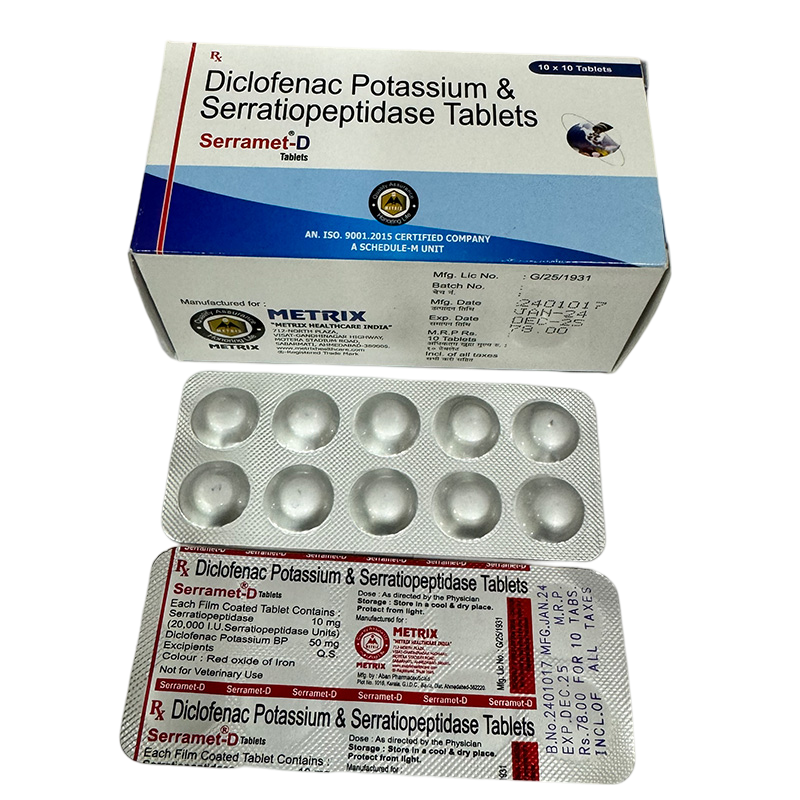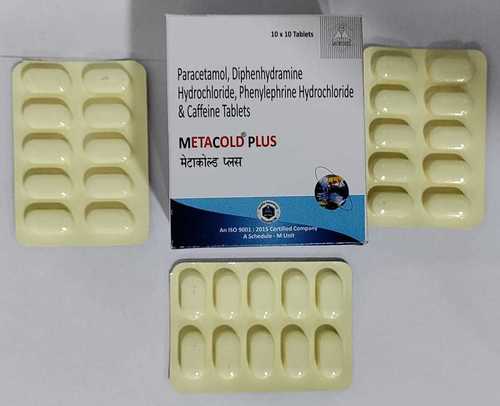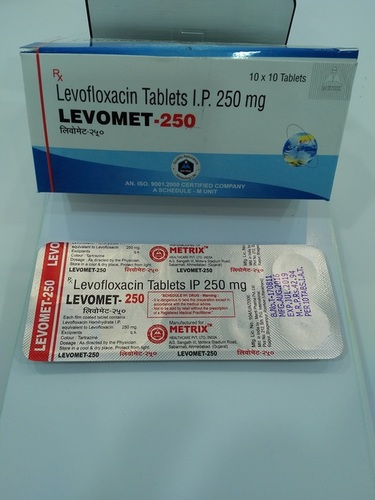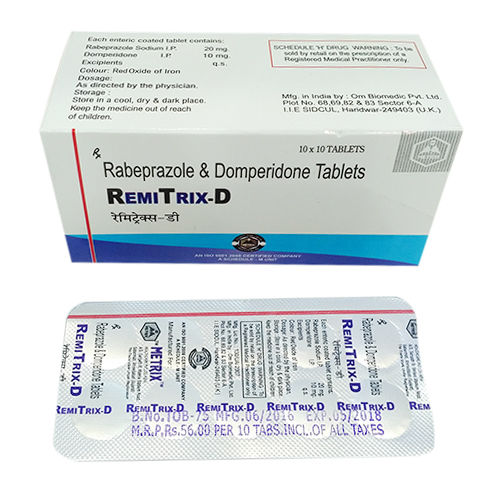serra 10 mg + diclo k 50 mg
78.0 INR/Strip
Product Details:
- Origin of Medicine India
- Drug Type General Medicines
- Physical Form Tablets
- Recommended For Doctor
- Dosage Guidelines As per Instructions
- Storage Instructions Cool & Dry Place
- Click to View more
X
serra 10 mg + diclo k 50 mg Price And Quantity
- 78.0 INR/Strip
- 10 Strip
serra 10 mg + diclo k 50 mg Product Specifications
- Cool & Dry Place
- Tablets
- India
- General Medicines
- As per Instructions
- Doctor
serra 10 mg + diclo k 50 mg Trade Information
- INDIA
- Cash Advance (CA), Cash in Advance (CID)
- 1000 Strip Per Month
- 30 Days
- No
- Sample costs shipping and taxes has to be paid by the buyer
- BOX
- Asia
- All India
- ISO,WHO-GMP
Product Description
You're asking about a common combination of medications often prescribed for pain and inflammation. This combination usually includes:
- Diclofenac Potassium 50 mg (Diclo K 50 mg): This is a Non-Steroidal Anti-Inflammatory Drug (NSAID).
- Serratiopeptidase 10 mg (Serra 10 mg): This is a proteolytic enzyme.
This combination is widely used in India under various brand names (e.g., Serra D, Dicloserra, Serranac-K, Serrafen K).
Here's a breakdown of each component and their combined action:
1. Diclo K 50 mg (Diclofenac Potassium 50 mg)
- Class: Non-Steroidal Anti-Inflammatory Drug (NSAID). Diclofenac potassium is a salt form that is generally absorbed faster than diclofenac sodium, leading to quicker pain relief.
- How it works: Diclofenac works by blocking the production of certain natural substances in the body called prostaglandins. Prostaglandins are chemical messengers that contribute to pain, inflammation (swelling, redness), and fever. By inhibiting their synthesis, diclofenac reduces these symptoms.
- Uses:
- Pain relief (mild to moderate)
- Inflammation reduction
- Conditions like:
- Osteoarthritis
- Rheumatoid arthritis
- Ankylosing spondylitis
- Gout
- Musculoskeletal pain (e.g., back pain, muscle pain, sprains)
- Post-operative pain
- Dental pain
- Menstrual pain (dysmenorrhea)
2. Serra 10 mg (Serratiopeptidase 10 mg)
- Class: Proteolytic enzyme (an enzyme that breaks down proteins).
- How it works: Serratiopeptidase is believed to work by breaking down abnormal proteins that accumulate at sites of inflammation. This action helps to:
- Reduce swelling (edema) by thinning body fluids and facilitating drainage from swollen tissues.
- Decrease pain by breaking down pain-inducing substances.
- Aid in tissue repair and healing.
- It may also help in the breakdown of fibrin, a by-product of blood clots, which can contribute to inflammation.
- Uses: Serratiopeptidase is often used as an adjunct to other anti-inflammatory drugs to enhance their effects and promote faster resolution of inflammation and swelling associated with:
- Post-operative inflammation
- Traumatic injuries (sprains, strains)
- Sinusiti
Tell us about your requirement

Price:
Quantity
Select Unit
- 50
- 100
- 200
- 250
- 500
- 1000+
Additional detail
Mobile number
Email







 Send Inquiry
Send Inquiry Send SMS
Send SMS Call Me Free
Call Me Free
